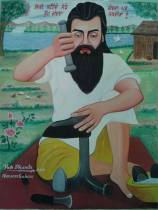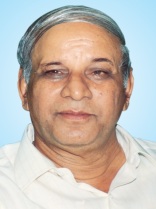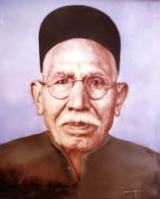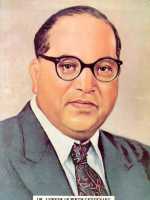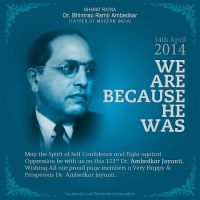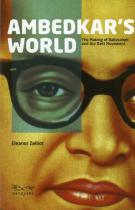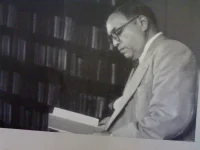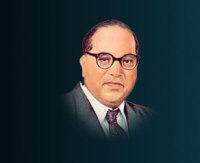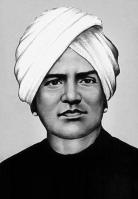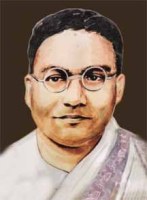AMBEDKAR, MUSLIMS AND PARTITION – By Asghar Ali Engineer
The Sangh Parivar keeps on raking up caste and communal issues since it has pro-people programmes. It thrives only on casteism and communalism and raking up issues pertaining to caste and communal controversies. After Gujarat carnage in which entire Sangh Parivar was involved now Mr. Katiyar of Bajrang Dal and president of U.P. BJP has raked up issue of Ambedkar and Muslims and that Ambedkar was anti-Muslim and anti-Pakistan.
Shri Katiyar maintains that his contention is based on Dr. Ambedkar’s book on Pakistan entitled Pakistan or Partition of India. As all communalists basically perpetrate lies and falsehood and spread disinformation in order to establish their case, Katiyar is no exception. In fact Dr.Ambedkar was in no way against Muslims or Islam. But anyone can be quoted out of context to prove what one wants to. Ambedkar was no Muslim baiter as he was a very meticulous and careful scholar and would not indulge, like members of the Sangh Parivar, into community baiting.
Ambedkar’s book on Pakistan is a work of great scholarship. I have reprint of its 1946 edition constituting the 8th volume of his writings and speeches published by Education Department of Government of Maharashtra. The plea of the book is such that one can easily extract some statements to suit ones purpose. But an honest scholar has to read the book in totality to understand Ambedkar’s views on Muslims and on Pakistan.
Ambedkar has divided his above book into five parts. The first part deals with “Muslim case for Pakistan”. Second part deals with “Hindu case for Pakistan”. Third part talks about “What If Not Pakistan”. Part four deals with “Pakistan and the Malaise” and part fifth discusses with issues like “Must There be Pakistan”, “The Problem of Pakistan” and “Who can Decide?”
It can thus be seen that if one quotes Dr. Ambedkar say from first section in which he gives Muslim point of view on Pakistan one can prove that Ambedkar totally favoured creation of Pakistan and if one quotes Ambedkar from second section i.e. “Hindu Case Against Pakistan” one can prove that Ambedkar was against Muslims. What Katiyar is doing is quoting Ambedkar from second section of his book to prove that Dr. Ambedkar was against Muslims.
It is interesting to note here that Ambedkar maintains in the third section, chapter VII that “Strange as it may appear Mr. Savarkar and Mr. Jinnah instead of being opposed to each other on the one nation versus two nations issue are in complete agreement about it. Both agree, not only agree but insist that there are two nations in India – one the Muslim nation and the other the Hindu nation.” Further he says, “They differ only as regards the terms and conditions on which the two nations should be. Jinnah says India should be cut up into two, Pakistan and Hindustan, the Muslim nation to occupy Pakistan and the Hindu nation to occupy Hindustan. Mr. Savarkar on the other hand insists that, although there are two nations in India, India shall not be divided into two parts, one for the Muslims and the other for Hindus; that the two nations shall dwell in one country and shall live under the mantle of one single constitution: that the constitution shall be such that the Hindu nation will be enabled to occupy a predominant position that is due to it and the Muslim nation to made to live in the position of subordinate co-operation with the Hindu nation.”
Thus it will be seen that Dr. Ambedkar has very fairly stated position of both the parties. He is not stating his own views in these two sections of his book. In fact Ambedkar is so fair and objective that he feels that one should not describe all invasions of India by Muslims as invasions against infidels or against India only. He says, “These invasions of India by Muslims were as much invasions of India as they were wars among Muslims themselves.” “This fact has remained hidden”, Ambedkar says, “because the invaders are all lumped together as Muslims without distinction. But as a matter of fact, they were Tartars, Afghans and Mongols. Muhammad (Mahmud?) of Ghazni was a Tartar, Mahommed of Ghori was an Afghan, Taimur was a Mongol, Babar was Tartar, while Nadirshah and Ahmadshah Abadali were Afghans.”
Continuing this line of argument Dr. Ambedkar says, “In invading India, the Afghan was out to destroy the Tartar and the Mongol was out to destroy the Tartar as well as the Afghan. They were not a loving family cemented by the feeling of Islamic brotherhood. They were deadly rivals of one another and their wars were often wars of mutual extermination.” This is very objective understanding of history and is not inspired by any communal attitude. However, one may differ from Ambedkar when he says, “What is, however, important to bear in mind is that with all their internecine conflicts they were all united by one common objective and that was to destroy the Hindu faith.”
But here Ambedkar is clearly contradicting himself. When Tartars and Mongols and Afghans were out to exterminate with each other and were not bound by the feeling of Islamic brotherhood how could they be united by any common objective to “destroy Hindu faith”. In fact these Muslim invaders had no such objective despite their rhetoric to the contrary. In fact many of them invaded at the invitation of Hindu rulers of India. But it must be said that Dr. Ambedkar is, on the whole, quite objective in assessing the history of Muslim rulers.
Dr. Ambedkar did not even support the Gandhian position that let the British quit India and then Indians would settle the matter among them and would sort out communal question. In fact in his introduction to the book Ambedkar says, “The British cannot consent to settle power upon an aggressive Hindu majority and make it its heir, leaving it to deal with the minorities at its sweet pleasure. That would not be ending imperialism. It would be creating another imperialism.The Hindus, therefore, cannot avoid coming to grips with Pakistan, much as they would like to do.”
Thus Ambedkar is quite categorical in his assertion that the communal or minority question should be properly settled before the British leave India. He feels that the minorities cannot be left to the mercy of “aggressive majority” as he puts it. Ambedkar has thoroughly examined the Muslim (or rather Muslim League) point of view in the first section of his book “Muslim Case for Pakistan”. Explaining Muslim League view he says, “?is it or is it not a fact that Muslims of India are an exclusive group? Is it or is it not a fact that they have consciousness of kind? Is it or is it not a fact that every Muslim is possessed by a longing to his own group and not to any no-Muslim group?”
And then he goes on to say, “if the answer to these questions is in the affirmative, then the controversy must end and the Muslim claim that they are a nation must be accepted without cavil.” Can one quote this passage from Ambedkar to maintain that he was advocating the cause of Pakistan? Oh, certainly not. Ambedkar is explaining Muslim League’s point of view, not his own.
Ambedkar had his own view of Muslims and Pakistan. He was totally opposed to the concept of Hindu Raj as well. In the section “Must There Be Pakistan” he says, If Hindu Raj does become a fact, it will, no doubt, be the greatest calamity for this country. No matter what the Hindus say, Hinduism is a menace to the liberty, equality and fraternity. On that account it is incompatible with democracy. Hindu Raj must be prevented at any cost.”
Still Ambedkar did not want partition. He says, “How have the French, the English, and the Italians succeeded in preventing the Raj of the majority community being established in their country? Surely, not by partition: What is their method? Their method is to put a ban on communal parties in politics. No community in Canada, South Africa or Switzerland ever thinks of starting a separate communal party.”
Ambedkar makes a very pertinent point in this respect and Indian Muslims should coolly deliberate over this. Ambedkar says, What is important to note is that it is the minority nations, which have taken the lead in opposing the formation of a communal party. For they know that if they form a communal party the major community will also form a communal party and the majority community will thereby find it easy to establish communal Raj. It is vicious method of self-protection.”
Thus it is very clear that Ambedkar was certainly not anti-Muslim nor in favour of Pakistan. He wanted a just solution to the minority problem in India. He gives his suggestions in the last section of his book i.e. part v. On page 359 of his book Ambedkar says that “Is not a fact that under the Montagu-Chelmsford reforms in most provinces, if not in all, the Muslims, the non-Brahmins and Depressed Classes united together and worked the reforms as members of one team from 1920 to 1937? Herein lay the most fruitful method of achieving communal harmony among Hindus and Muslims and of destroying the danger of Hindu Raj. Mr. Jinnah could have easily pursued this line. Nor was it difficult for Mr. Jinnah to succeed in it.”
And Ambedkar was convinced that “..Mr. Jinnah is the one person who has all the chances of success on his side if he had tried to form such a united no-communal party. He has ability to organize. He had the reputation of a nationalist.”
Thus a careful study of Ambedkar on the question of Pakistan makes it clear that he was far from being anti-Muslim as Shri Katiyar of BJP would like to project him. He was very balanced and just in his attitude towards Muslim question and suggested very constructive way out. One must read the full text of the book to understand Ambedkar’s attitude towards the communal question in pre-independence India. Likes of Katiyar have neither ability nor honesty to study Ambedkar’s writings before making public statements. He does so only to derive political mileage and polarise Hindus and Muslims on one hand, and Muslims and dalits, on the other, to monopolise Hindu votes.
Article Authored – By Asghar Ali Engineer
Originally Posted on JANUARY 16-31, 2003
source: http://www.csss-isla.com/arch%20165.htm










